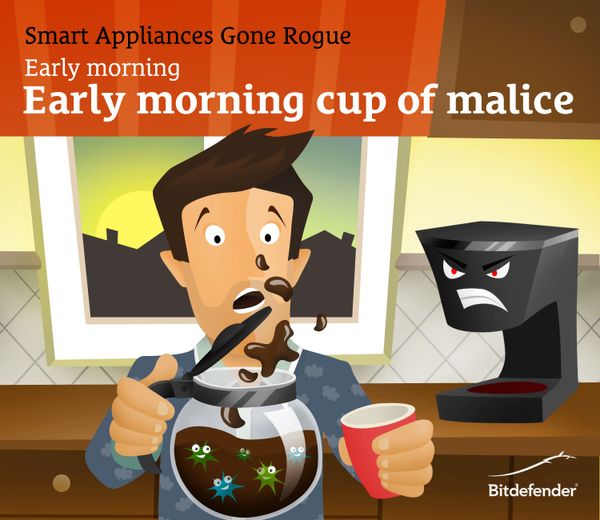Smart Devices and Their Blind Spot

If Internet-connected device, other than your regular PC, seemed eccentric a few years back, today smartphones are a standard. And a fast growing number and variety of smart appliances follow this trend of web-connectivity and data-exchange. Of course unlimited Internet access comes with 24-hour-a-day risk.
From mid-range television sets and smart meter installations to intelligent stoves, microwaves or fridges that sync their contents with smartphones to create grocery lists, an ever growing number of household appliances are designed to connect to the Internet.
Remember The Jetsons? It`s only a matter of time until people can remotely access washing machines, coffee makers, refrigerators or microwave ovens while on their way back from work.
The Bat-mobile is no longer just a black car in a comic book. Automobiles become cool gadgets with smart keys starting the engine or turning on the AC system from afar. In-car PC systems print and scan documents on location and email them back to the office and access Wi-Fi networks for data synchronization or to communicate with other Wi-Fi enabled devices. But these smart in-car computers or dedicated GPS devices are also the bits that make these cars security-wise hazardous.
Smart medical equipment, such as implants used to monitor and manage diabetes and heart disease are radio sensitive, hence vulnerable to radio signals. This is why cell-phones are not recommended to be switched on near patients with pacemakers or diabetes implants as radio signals pose a real threat to the people wearing them.
TV sets have already proven vulnerable to rogue firmware updates and run the risk of being put out of order or made to serve inappropriate content to their users. And since most TV sets can report usage information (i.e. remote control and TV station usage), users could also end up having their habits monitored. These next-generation TV sets come with teleconferencing, social networking capabilities and built-in browser that again could be used against the user or the device.
All these intelligent devices are prone to hack attacks in the near future. What keeps them safe now is their still-rudimentary connectivity. Plus the fact that today hackers lack motivation because the devices are rare. But the smarter they get, the more we grow accustomed to them, and the more appealing they become to hackers.
As for what to do to keep your smart devices protected, for now it is essential to secure the Internet connection used by these appliances. As some home devices connecting via Wi-Fi for convenience, makes them vulnerable to takeovers by breaching into the network, behind the firewall. Plus, it is crucial that you download updates exclusively from the provider`s official websites.
All product and company names mentioned herein are for identification purposes only and are the property of, and may be trademarks of, their respective owners.
tags
Author
A blend of product manager and journalist with a pinch of e-threat analysis, Loredana writes mostly about malware and spam. She believes that most errors happen between the keyboard and the chair.
View all postsRight now Top posts
How to Protect Your WhatsApp from Hackers and Scammers – 8 Key Settings and Best Practices
April 03, 2025
Outpacing Cyberthreats: Bitdefender Together with Scuderia Ferrari HP in 2025
March 12, 2025
Streamjacking Scams On YouTube Leverage CS2 Pro Player Championships to Defraud Gamers
February 20, 2025
How to Identify and Protect Yourself from Gaming Laptop Scams
February 11, 2025
FOLLOW US ON SOCIAL MEDIA
You might also like
Bookmarks











